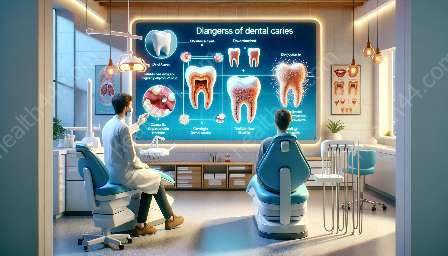It's not uncommon for seemingly unrelated areas of medicine to intersect, leading to new insights and improved patient care. One such connection exists between oral health and respiratory conditions, prompting dentists and pulmonologists to collaborate for a holistic approach to patient well-being. In this cluster, we'll explore the relationship between oral health and respiratory conditions, the effects of poor oral health on respiratory health, and the collaborative efforts between dentists and pulmonologists to address these interconnected issues.
The Link between Oral Health and Respiratory Conditions
Before delving into the collaborative efforts, it's essential to understand the link between oral health and respiratory conditions. Research has shown that there is a significant connection between the two, with oral health influencing respiratory health in various ways. The mouth can act as a reservoir for respiratory pathogens, which can be aspirated into the lungs, potentially leading to respiratory infections and exacerbation of existing conditions. Additionally, poor oral health and inflammation in the oral cavity can contribute to systemic inflammation and immune dysregulation, which can impact respiratory health.
Respiratory Conditions and Oral Health
One of the most notable examples of the interplay between oral health and respiratory conditions is seen in individuals with chronic obstructive pulmonary disease (COPD). COPD patients often experience poor oral health due to factors such as dry mouth caused by medications, compromised immune function, and difficulty practicing good oral hygiene. Poor oral health in this population has been linked to increased risk of exacerbations, hospitalizations, and mortality.
Effects of Poor Oral Health
Poor oral health can have far-reaching effects on overall health, including respiratory health. The presence of periodontal disease, for instance, has been associated with an increased risk of pneumonia and other respiratory infections. Moreover, untreated dental caries, oral infections, and inflammation can contribute to systemic inflammation, potentially exacerbating respiratory conditions and compromising the body's ability to fight off respiratory infections.
Collaborative Efforts between Dentists and Pulmonologists
Recognizing the intricate relationship between oral and respiratory health, dentists and pulmonologists are increasingly working together to provide comprehensive care for patients. This collaboration involves shared knowledge, coordinated treatment plans, and a focus on preventive measures to address the common underlying factors affecting both oral and respiratory health.
Screening and Referral Programs
One way dentists and pulmonologists are bridging the gap is through screening and referral programs. Dental professionals are trained to recognize signs of potential respiratory issues, while pulmonologists can assess the oral health status of their patients to identify any concerns that may be impacting respiratory health. By establishing seamless referral systems, patients can receive timely and integrated care that addresses both oral and respiratory health.
Education and Awareness
Another vital aspect of collaboration is promoting education and awareness among both dental and pulmonary healthcare providers. Understanding the reciprocal impact of oral and respiratory conditions is essential for delivering optimal care. Through continued education and interprofessional communication, dentists and pulmonologists can enhance their ability to identify, prevent, and manage conditions that affect both oral and respiratory health.
Coordinated Treatment Planning
Collaborative treatment planning is also crucial in ensuring that patients receive comprehensive care. Dentists and pulmonologists can work together to develop treatment plans that address not only the oral manifestations of respiratory conditions but also the impact of poor oral health on respiratory health. This may involve coordinating treatments for periodontal disease, addressing dry mouth and oral infections, and optimizing oral hygiene practices to minimize the risk of respiratory complications.
Promoting Healthy Practices
Furthermore, dentists and pulmonologists can collaborate on promoting healthy practices that benefit both oral and respiratory health. This includes advocating for smoking cessation, which is not only detrimental to lung health but also significantly impacts oral health. By aligning efforts to support patients in maintaining good oral hygiene and respiratory health practices, dentists and pulmonologists can contribute to improved overall well-being.
Conclusion
The interconnection between oral health and respiratory conditions underscores the importance of collaborative care between dentists and pulmonologists. By recognizing the impact of poor oral health on respiratory health and vice versa, these healthcare professionals can work together to improve patient outcomes and quality of life. Moving forward, a continued focus on interdisciplinary collaboration, education, and coordinated care will be essential in addressing the intricate relationship between oral and respiratory health.



